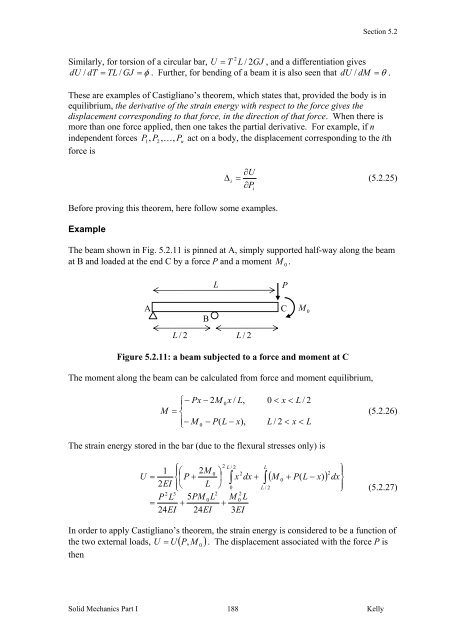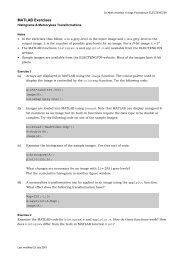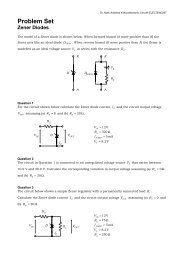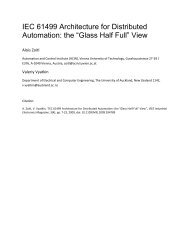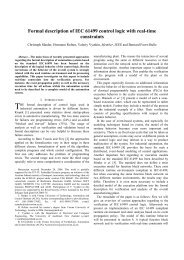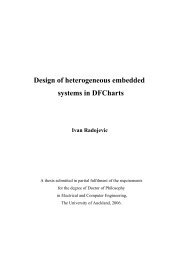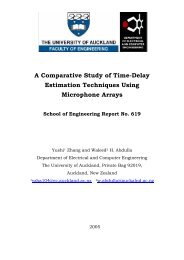5.2 Elastic Strain Energy
5.2 Elastic Strain Energy
5.2 Elastic Strain Energy
Create successful ePaper yourself
Turn your PDF publications into a flip-book with our unique Google optimized e-Paper software.
Section <strong>5.2</strong><br />
2<br />
Similarly, for torsion of a circular bar, U = T L / 2GJ<br />
, and a differentiation gives<br />
dU / dT = TL / GJ = φ . Further, for bending of a beam it is also seen that dU / dM = θ .<br />
These are examples of Castigliano’s theorem, which states that, provided the body is in<br />
equilibrium, the derivative of the strain energy with respect to the force gives the<br />
displacement corresponding to that force, in the direction of that force. When there is<br />
more than one force applied, then one takes the partial derivative. For example, if n<br />
independent forces P 1, P2<br />
, K , Pn<br />
act on a body, the displacement corresponding to the ith<br />
force is<br />
Before proving this theorem, here follow some examples.<br />
Example<br />
∂U<br />
Δ i =<br />
(<strong>5.2</strong>.25)<br />
∂P<br />
The beam shown in Fig. <strong>5.2</strong>.11 is pinned at A, simply supported half-way along the beam<br />
at B and loaded at the end C by a force P and a moment M 0 .<br />
Figure <strong>5.2</strong>.11: a beam subjected to a force and moment at C<br />
The moment along the beam can be calculated from force and moment equilibrium,<br />
⎧−<br />
Px − 2M<br />
0 x / L,<br />
⎪<br />
M = ⎨<br />
⎪⎩ − M 0 − P(<br />
L − x),<br />
Solid Mechanics Part I 188<br />
Kelly<br />
i<br />
0 < x < L / 2<br />
L / 2 < x < L<br />
The strain energy stored in the bar (due to the flexural stresses only) is<br />
2 L / 2<br />
L<br />
1 ⎪⎧<br />
⎛ 2M<br />
0 ⎞ 2<br />
U = ⎨⎜<br />
P + ⎟ x dx<br />
2EI<br />
L ∫ + ∫<br />
⎪⎩ ⎝ ⎠ 0<br />
L / 2<br />
2 3<br />
2 2<br />
P L 5PM<br />
0L<br />
M 0 L<br />
= + +<br />
24EI<br />
24EI<br />
3EI<br />
L<br />
A C<br />
B<br />
L / 2<br />
L / 2<br />
( M + P(<br />
L − x)<br />
)<br />
0<br />
2<br />
⎪⎫<br />
dx⎬<br />
⎪⎭<br />
(<strong>5.2</strong>.26)<br />
(<strong>5.2</strong>.27)<br />
In order to apply Castigliano’s theorem, the strain energy is considered to be a function of<br />
the two external loads, U = U ( P,<br />
M 0 ) . The displacement associated with the force P is<br />
then<br />
P<br />
M 0


